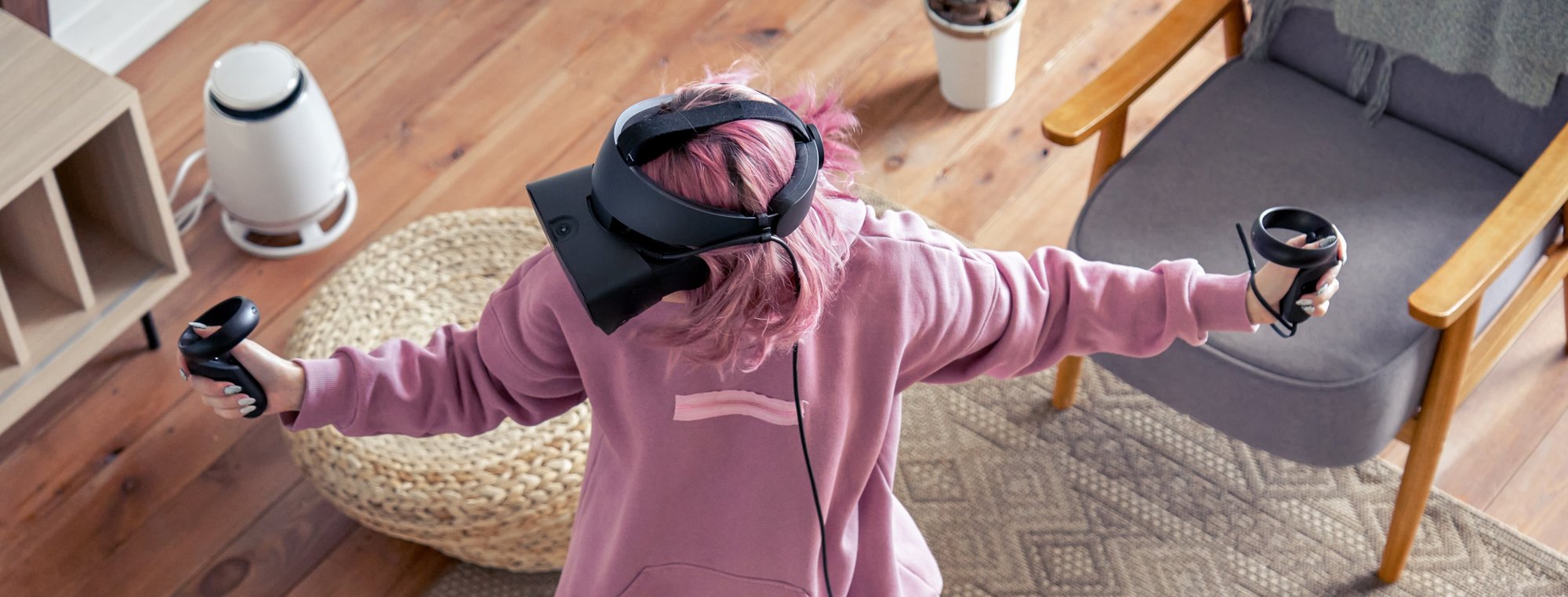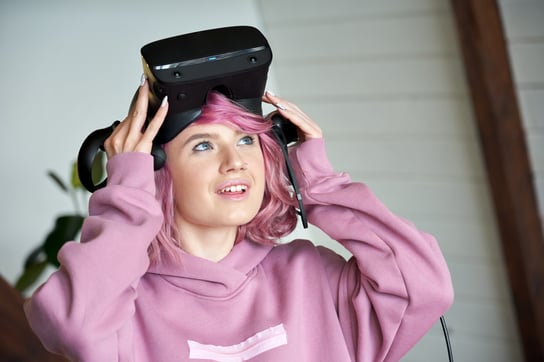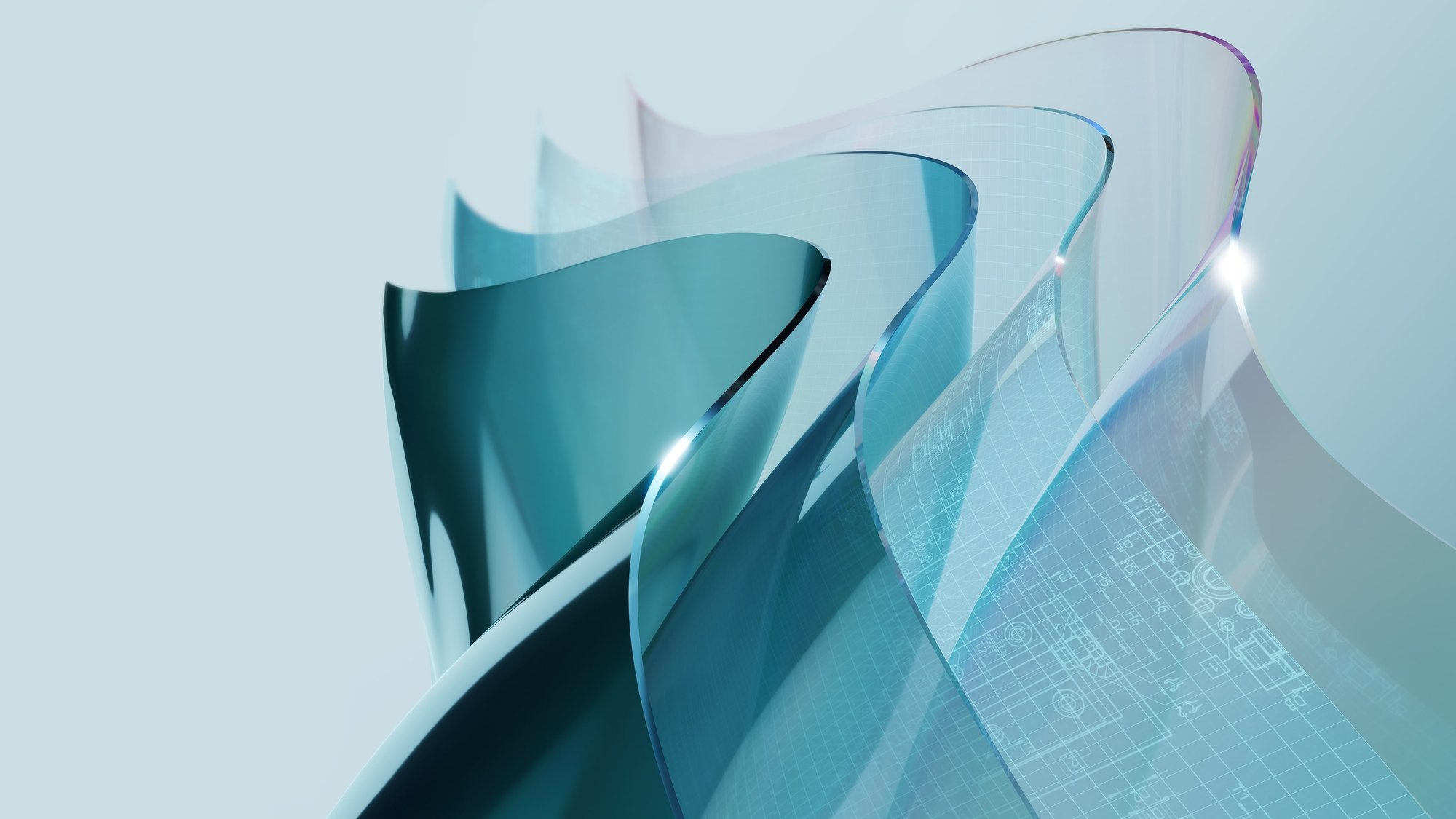
Reduce VR Motion Sickness with Accurate Head-Tracking Performance Evaluation

Almost all head-mounted AR and VR displays cause motion sickness to some extent. Motion sickness causes bad user experience and can cause headaches and nausea. AR and VR motion sickness is caused by inadequate head tracking performance, which many manufacturers of VR glasses are struggling to improve. Using OptoFidelity’s head-tracking performance measurements, you can reduce VR motion sickness.
Key Points of This Use Case
- As an HMD manufacturer, you can reduce motion sickness by implementing accurate head-tracking performance evaluations to your R&D process
- Our solution speeds up the development of AR/VR smart glasses that don’t cause motion sickness
- Reduce R&D costs and cycles and get a user-friendly product to market faster
Key Points of This Use Case
- As an HMD manufacturer, you can reduce motion sickness by implementing accurate head-tracking performance evaluations in your R&D process
- Our solution speeds up the development of AR/VR HMDs that don’t cause motion sickness
- Reduce R&D costs and cycles and get a user-friendly product to market faster
The Causes Behind AR and VR Motion Sickness
Several factors can increase the motion to photon latency and induce motion sickness. The most typical cause of motion sickness is the limited processing power in the HMD. High-end chips are expensive and can be challenging to come by. They can also increase the size, form factor, and power consumption of the HMD. Algorithms compensate for the lack of computing power by predicting head movements and changing the visual input accordingly. Algoritms can for example use time warping to reduce latencies.
However, creating and fine-tuning these algorithms can be costly and take a long time, delaying the device’s market entry. Perfecting the algorithms requires precise measurement data of the head tracking capabilities of the device.
Motion sickness can also be caused by misaligned or malfunctioning tracking and leveling components in the HMD. If the leveling components provide false data to the processor, the HMD fails to track head movements properly. There’s still room to develop more accurate cameras and more efficient ways to read information from the camera image with less processing power. Interpreting real-world information from images is improving, but the accuracy and reliability still has room to improve.
Understanding the Manifestations of VR motion Sickness
To reduce VR motion sickness, we first need to understand the various manifestations that cause the discrepancy between the eyes and the inner ear.

Latency
General delays in responding to the movement of the user’s head

Jitter
Perceptible shakiness in the virtual environment caused by inaccurate tracking or noise caused by sensors and processing.

Drift
Virtual content moves even when there is movement in the real world. The HMD adjusts for movement for it even when there is none or the zero location drifts in some direction when there is movement.

Tracking issues
HMD does not detect movement accurately enough.
The Problem with Testing AR and VR Head Tracking Performance on Users
Previously, HMD manufacturers have relied on testing their prototypes on users and adjusting devices accordingly. Users would wear the VR HMDs or AR glasses and give feedback on the experience. Relying solely on human testing is problematic for a few reasons:
- Users can struggle to distinguish between the different phenomena causing motion sickness. For example, it can be challenging to describe whether, at any given time, you are experiencing drift, poor repeatability, or both.
- People innately experience VR motion sickness differently. Some are more prone to it than others.
- Human perception changes depending on the circumstances. Test results for the same individual can be very different on Monday morning versus Friday afternoon.
How to Reduce VR Motion Sickness with Accurate Head-Tracking Performance Evaluations
The key to developing an AR or VR headset that doesn’t cause motion sickness is to evaluate head-tracking performance systematically. OptoFidelity’s Buddy HMD Performance Measuring solution enables your R&D team to rapidly test the software and hardware change’s effects on head-tracking performance.
You can use the measurements to pinpoint the issue, for example, jitter, causing motion sickness in the device. Precise data supports you in identifying the software and hardware issues for poor head-tracking performance.
The system is quick to operate, so you can run a new test each time you update your algorithm.
The system also measures the repeatability of errors, ie. changes in errors. If the error is constant, repeatability is good and the error can potentially reduced with proper calibration.
How Do Head-Tracking Performance Evaluations Work?
In short, we combine the headset’s orientation information with the orientation information of the virtual world.
- For each real-world movement axis, we calculate the exact position of the headset at any given time.
- Using our proprietary virtual constellation made of around 200 different markers, we can accurately capture the correct position in the virtual world.
- The constellation runs independently of the testing software so the measurement is by nature impartial
- Virtual and real-world positions are then compared on each frame.
Speed Up Your R&D with Our Exact Head-Tracking Performance Evaluations
OptoFidelity BUDDY can markedly reduce the time and money spent on R&D. You can quickly and reliably test the difference that changes to software or hardware have on your device. You can run tests after each update meaning you get results fast.
The solution is already used in the following industries:
- Entertainment
- Medical devices
- Defense and security
